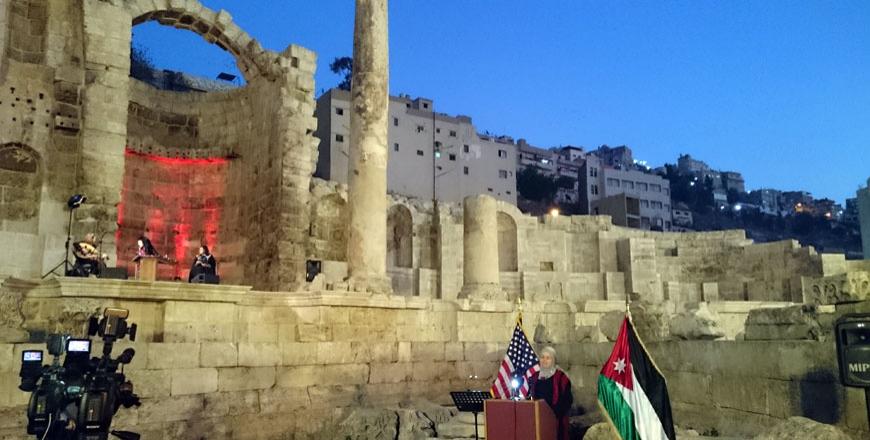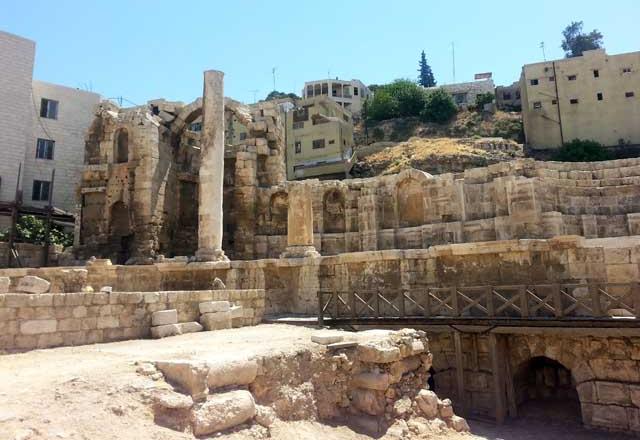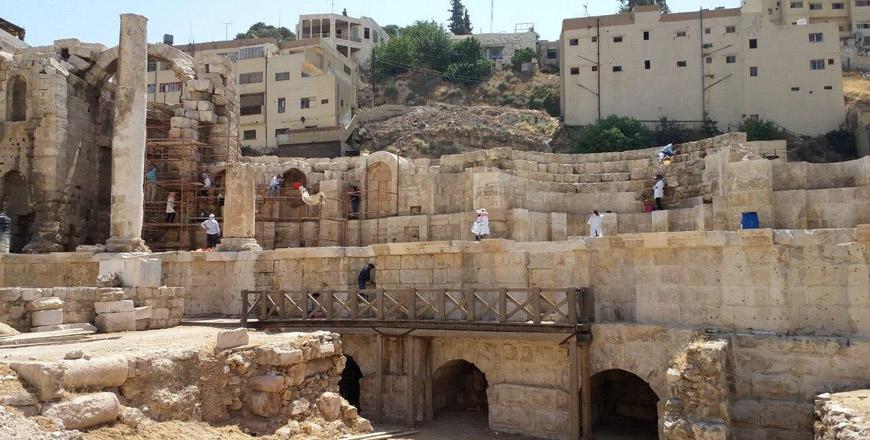You are here
Rehabilitated downtown Nymphaeum Archaeological Park opens to public
By Maram Kayed - Oct 24,2018 - Last updated at Oct 24,2018

The newly rehabilitated Roman Nymphaeum Archaeological Park was turned into an outdoor museum and performance space (Photo by Maram Kayed)
AMMAN — The newly rehabilitated Roman Nymphaeum Archaeological Park in downtown Amman was opened to the public on Monday after the completion of a project to turn it into an outdoor museum and performance space.
The two-phased project, worth $334,000, was launched in 2014 by the US embassy under the Ambassadors Fund for Cultural Preservation programme.
The Ambassadors Fund for Cultural Preservation, which supports the preservation of cultural sites, cultural objects and forms of traditional cultural expression, has provided over $2 million for cultural rehabilitation projects across Jordan, according to a report made available to The Jordan Times.
“Protecting Jordan’s cultural heritage has value not only to history and human understanding, but it also has crucial economic value to Jordan, by strengthening its tourism industry, which represents 14 per cent of the country’s GDP,” said the US Embassy’s Chargé D’affaires Paul Malik.
The project’s objective was to turn the nymphaeum, a former fountain built in the second century AD, as a gift to the nymphs, into an archaeological site on park with the more famous nearby tourist attractions such as the Odeon Theatre and Roman Theatre.
The nymphs were thought to be divine spirits associated with water and the site is believed by archaeologists to have contained a 600sq.m pool, which was 3 metres deep and was continuously refilled with water.
Nymphaea in the past often served three purposes — as reservoirs, sanctuaries and assembly points, Malik explained, adding, “We hope that the Amman Nymphaeum will satisfy the thirst of the inquisitive tourists and residents of Amman.”
The US Embassy’s Cultural Affairs Officer Peter Neisuler told The Jordan Times: “We hope this will serve as a kind of open museum to appreciate 2,000 years of history, but also as a future place of cultural appreciation where vibrant cultural events can be held.”
Also associated with the future of the archaeological park was the issue of keeping it clean, as it is situated next to the fruits and vegetables market, Mayor of Amman Yousef Shawarbeh pointed out.
“The municipality will do its due diligence to keep the area clean and provide the requirements for its preservation,” Shawarbeh said at the launch cermoney.
Among the university students who cooperated with the Hamdi Mango Centre for Scientific Research to rehabilitate the site, Shurouq Saleem, an archaeological conservation major, said: “I wanted to do this project because it is nice to employ our knowledge to refine our country.”
Yasmeen Hdeeb, a chemistry student at the University of Jordan, added, “I always walked by this place as a child only to see it closed, it feels amazing knowing I had something to do with its coming back to life.”
Related Articles
AMMAN — The second phase of the restoration and rehabilitation of the Roman Nymphaeum in Amman was launched on Tuesday.The project is implem
The Hamdi Mango Centre for Scientific Research (HMCSR) will benefit from a $200,000 US grant for the restoration and rehabilitation of the Roman Nymphaeum in downtown Amman.
AMMAN — The United States’ Ambassadors Fund for Cultural Preservation (AFCP) has awarded 15 small grants and one large grant with additional



















